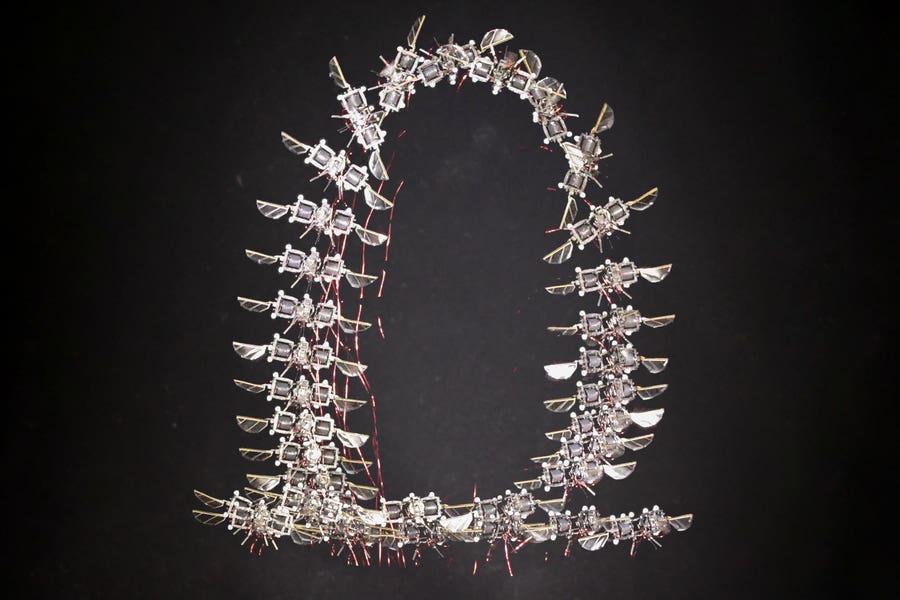Unlocking hope: Breakthrough ALS drug prolongs lifespan and eases symptoms
In the universe of neurodegenerative diseases, Amyotrophic lateral sclerosis (ALS) stands as one of the most relentless.

[Sept. 24, 2023: Staff Writer, The Brighter Side of News]
In the universe of neurodegenerative diseases, Amyotrophic lateral sclerosis (ALS) stands as one of the most relentless. (CREDIT: Getty Images)
In the universe of neurodegenerative diseases, Amyotrophic lateral sclerosis (ALS) stands as one of the most relentless. It's a ruthless affliction characterized by rapid progression and eventual fatality. While researchers globally have been in pursuit of effective treatments, significant breakthroughs have been elusive—until now.
A dedicated team of researchers from the University of Helsinki, joined by an assembly of national and international collaborators, has potentially ushered in a new era for ALS treatment. Their intensive investigation has unveiled the therapeutic prowess of a protein named cerebral dopamine neurotrophic factor (CDNF).
ALS: The Silent Aggressor
For the uninitiated, Amyotrophic lateral sclerosis is a deadly neurodegenerative ailment that voraciously attacks the nerve cells in both the brain and the spinal cord.
The devastation wreaked by ALS is profound—leading to muscle wasting, paralysis, and sadly, death due to respiratory failure, often just 1 to 3 years post symptom emergence. Presently, the European medical arsenal holds only riluzole, which offers ALS patients a mere few additional months of life. A cure remains frustratingly out of reach.
Related Stories
Unlocking the Promise of CDNF
CDNF, the promising protagonist of this narrative, isn't new to the medical fraternity. Professor Mart Saarma's laboratory first identified it in 2007, and since then, its therapeutic benefits have been hinted at in diseases like Parkinson's.
Located mainly within the endoplasmic reticulum (ER) of cells—a critical organelle responsible for synthesizing and maturing a significant portion of a cell's proteins—CDNF's primary function has remained somewhat enigmatic.
In this groundbreaking study, the Regenerative Neuroscience Group of the University of Helsinki delved deep. Using animal models engineered with human mutations akin to those seen in ALS patients, they sought to discern CDNF's impact on ALS progression and its operative mechanism.
Continuous 4-week CDNF i.c.v infusion improves motor behaviour and protects spinal MNs in the ChAT-tTA/TRE-TDP43-M337V rat model. (CREDIT: National Library of Medicine)
What truly captured the researchers' attention was the ER stress—a cellular protective mechanism against external threats. But in many neurodegenerative diseases, this "stress" becomes a chronic menace, initiating cell death.
Stunning Revelations and Implications
Dr. Francesca De Lorenzo, the study's lead author, articulated the team's monumental findings. "We observed that when ALS-afflicted mice and rats were administered with CDNF, there was a remarkable improvement in their motor functions. The progression of paralysis symptoms was halted. This positive transformation was mirrored in a notable rise in the number of surviving motoneurons in the spinal cords of these animals, in stark contrast to those untouched by CDNF."
CDNF treatment decreases UPR markers expression in TDP43-M337V expressing MNs. Effect of CDNF alone or in combination with different concentrations of 4µ8C, KIRA6 or GSK2606414 on MNs survival after 24 h of TP (5 nM) treatment. Mean ± SEM of at least three different experiments. (CREDIT: National Library of Medicine)
De Lorenzo further elucidated the potential mechanism, "Our experiments hint at CDNF's ability to rescue motoneurons, possibly by mitigating the ER stress response and subsequently reducing cell death. Intriguingly, this ER stress was a consistent feature across all our animal models, regardless of the specific genetic mutations."
These findings have implications far beyond just academic interest. Professor Michael Sendtner from the University of Würzburg, a global authority on ALS research and the study's co-author, remarked, "This exploration potentially paves the way for a scientifically sound therapy to combat one of the most severe cellular challenges in ALS: ER stress.”
CDNF administration attenuates the expression of UPR markers in the spinal cord of ChAT-tTA/TRE-TDP43-M337V rats at 21 days after transgene activation. (CREDIT: National Library of Medicine)
Towards a Brighter Horizon for ALS Patients
Dr. Merja Voutilainen, Assistant professor at the University of Helsinki and the guiding force behind this study, echoed the sentiments of hope and optimism. "CDNF could be the beacon we've been searching for, the cornerstone for constructing rational treatments for ALS."
It's essential to approach these findings with a mix of hope and prudence. While these results are undoubtedly promising, the journey from lab bench to bedside is long and intricate.
Nonetheless, this discovery signifies a colossal stride forward in understanding ALS and its potential treatment. As we await further investigations and clinical trials, the horizon seems a tad brighter for those battling this formidable disease.
Note: Materials provided above by The Brighter Side of News. Content may be edited for style and length.
Like these kind of feel good stories? Get the Brighter Side of News' newsletter.



